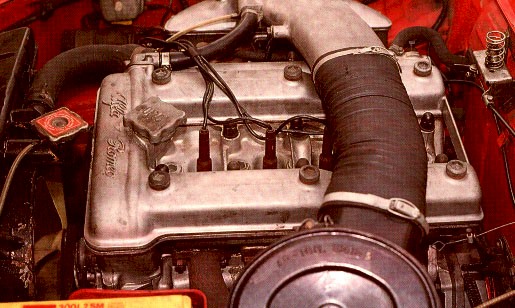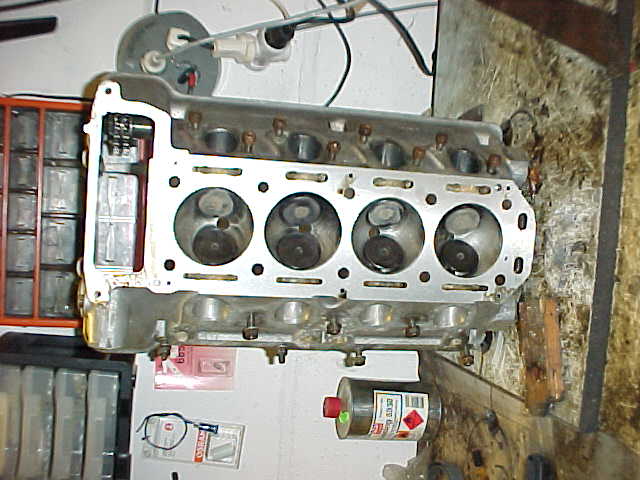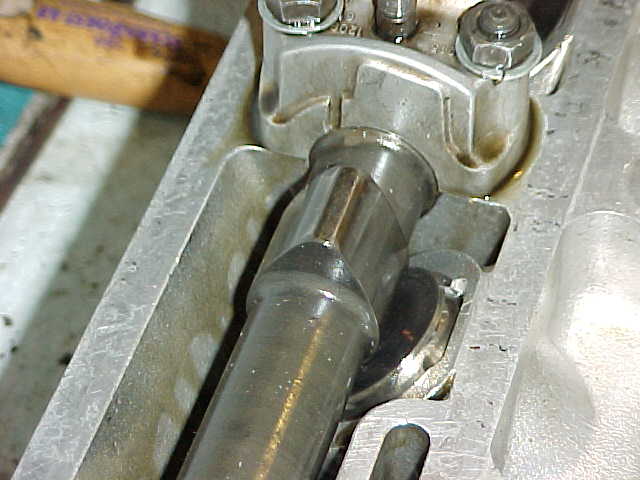
Via Veloce by Wille R. www.veloce.se since November 1995 and still here.
Alfa Romeo Duetto 1966 - 1969 FAQ
--![]()
The engine and it's heritage
The origins of the Duetto’s twin cam engine extend back to 1954, when the first Giulietta was launched. Dr Orazio Satta Puliga’s brilliant hemispherical chambered central spark plug, cast aluminium engine provided the basis for a succession of Alfa Romeo powerplants. The Duetto shared its engine with the Giulia GTV – launched at the same time as the Duetto – which was then the most powerful of Alfa Romeo’s 1.6-litre engines.

Designated type 00536, its construction was of light alloy for both the block and cylinder head. The removable cylinder liners were in special cast iron, while the head incorporated water-cooled valve seat inserts.
The crankshaft was of treated (indium-plated) steel alloy, with counterweights, on five main bearings. The connecting rods were of forged indium-plated steel with bronze small end bushing, the bearings having thin steel shells lined with anti-friction indium. As for the pistons, these were in light alloy as well, with chromium-plated compression ring, oil scraper ring and oil control ring.
The oil filter was a cartridge type.

The combustion chambers were hemispherical in shape (i.e. with dome-shaped piston crowns), having centrally located spark plugs (in most markets, Lodge 2HL 14mm items with four electrodes). The oil sump was in light alloy, mounted low-down in front of the forward cross-member that supports the engine mounts. It incorporated cooling fins to cool both the oil and the engine, and was, unusually, sited transversely.

Alfa Romeo’s trademark has always been twin overhead camshafts, in this case driven by two chains – one short one connected to the crankshaft that halved engine speed and a longer upper one with an adjustable coil spring acting as a tensioner. There were two overhead valves per cylinder, inclined at 80 degrees in a ‘V’ formation and directly operated by the camshafts (a single inverted-cup tappet being enclosed in an oil bath). The inlet valves were 31mm and the 37mm exhaust valves were sodium-filled (a carry-over from aircraft engine production). The exhaust was a four-into-two-into-one system with three silencers; the rear pipe was forced to arch up over the axle.

The specified carburettors were two Solex C32 PAIA 7 horizontal down-draught twin-choke carbs, with vacuum control of the second barrel throttle. A separate carburettor barrel fed each cylinder. In order to avoid relying on one supplier Alfa Romeo also the 40 DCOE 27 twin-barrel carburettors from Weber as an alternative. Naturally the carburettor controls differed on left-hand drive and right-hand drive cars. The compression ratio was 9.0:1.
As for the ancillaries, the fuel was pumped mechanically by a diaphragm pump via a jackshaft from the distributor, which had a centrifugal advance. It was mounted on the right-hand side of the engine, while the bowl filter that also regulated the outlet pressure of the fuel was mounted on the inner wing. The oil filter was of the disposable full-flow cartridge type and could be any one of many brands, including Fispa, Fram, Filt, Comit and Falcos. The filter was in series with the delivery circuit (with a clogged element bypass), the capacity of the entire system being 5.75kg (11.4 pints).
The cylindrical air filter incorporated a dry, pleated element and the air filter itself was mounted on the left-hand side of the engine (facing forwards), with a large, flat manifold connecting it with the carburettors on the opposite side.
Cooling was naturally by water through a front-mounted radiator and fan, with a centrifugal pump forcing circulation. This was mounted on the fan bracket and driven by the fan/generator belt (unusually, the water pump also contained the rev counter drive). A thermostat controlled the coolant temperature. The total capacity of the system was 7.5 litres (1.65 gallons).
The 1600 engine was claimed by Alfa Romeo to be the most powerful production engine in its class, and also that the power-to-weight ratio was the highest of any car with a 1.6-litre engine, and also (less credibly perhaps) the highest of any two-seater convertible. Developing 109bhp DIN (125bhp in SAE terms) at 6000rpm, the specific output equated to 69.4bhp per litre (or 79.6bhp per litre SAE). Torque was also strong, at 14.2 kgm (103 lb ft), delivered at a very low 2800rpm; the torque curve was notable for its almost completely flat profile between this figure and around 5000rpm. Alfa Romeo recommended using 92-94 octane petrol and quoted a fuel consumption of 29.6mpg at a constant 75mph (120kmh).
 At
the third Sports Car Show at Turin in February 1968, Autodelta displayed a
Group 3 GT engine for use in the Duetto, which developed 160bhp at
7500rpm. This variant boasted a top speed of 134mph but the engine arrived
too late in the Duetto’s life, as the 1750 engine was already a reality.
- Fusi p629
At
the third Sports Car Show at Turin in February 1968, Autodelta displayed a
Group 3 GT engine for use in the Duetto, which developed 160bhp at
7500rpm. This variant boasted a top speed of 134mph but the engine arrived
too late in the Duetto’s life, as the 1750 engine was already a reality.
- Fusi p629
If you have any comments, please send an E-mail
#